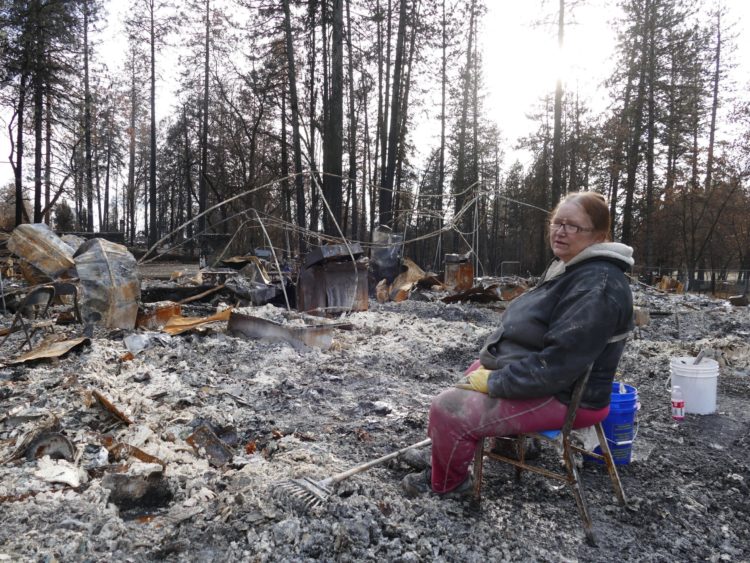Editor's note: This is the second of five posts from the 2022 Power of Narrative conference at Boston University. The first post features New York Times reporter Ellen Barry with tips on first-person narratives and Debbie Cenziper on narrative in investigations.
At first glance, it would be easy to dismiss Lizzie Johnson as too young to have earned her resume. Among her accomplishments: Multiple internships at regional newspapers; a three-time finalist for the Livingston Award for Young Journalists; a first place for long-form writing in the Best of the West; appearances on the Longform Podcast and This American Life. Then there’s her 2021 book: “Paradise: One Town’s Struggle to Survive an American Wildfire.”

The latter grew out of Johnson’s award-winning deadline and narrative work covering the 2018 Canp Fire that devastated the community of Paradise, California. At that point, Johnson had worked her way from covering local governments for the San Francisco Chronicle to becoming the newspaper’s wildfire reporter. Now Johnson is on the local enterprise team at The Washington Post.
She went back to the lessons she took into the field with her to cover the Camp Fire and condensed them to five essential questions for reporting narrative on deadline that she shared at the 2022 Power of Narrative conference at Boston University.
Tip 1: Is there a place you can profile?
Remember to focus on the location of the story as well as the events. When reporting in Paradise, Johnson noticed that most reporters were covering the fire and what had happened, but there was almost no storytelling about what had burned down. Johnson saw a chance to “zig when everyone is aagging” and created a eulogy/requiem for the town of Paradise. According to Johnson, reporting on the place itself is a good way to connect with the community and provide a greater context for what disaster or event might have occurred there.
Tip 2: Can you shadow a stakeholder?
One of the best ways to tell narratives is through the experience of a community member. In reporting on the wildfire, Johnson created a chart of potential stakeholders, starting with the event and thinking of all the people affected. She worked her way through that list to find interesting subjects that became the focus of several of her narratives.
Wildfire stories by Lizzie Johnson
Tip 3: Is there an accountability angle?
When reporting on an event or disaster, Johnson suggests looking at those who might be accountable or have some responsibility. In Paradise, she looked to the Town Council, creating a narrative about one of their meetings held the week after the fire. The narrative explored how the council dealt with the disaster and the effectiveness of their evacuation plan.
Tip 4: Can you find underrepresented voices?
When writing a narrative, Johnson advises looking at groups that are typically underrepresented in the media. She says readers can get bored reading stories told from the same viewpoint. For example, in Paradise, Johnson sought out teenagers who were part of a ballet studio's production of the Nutcracker, one of the community's first normal activities since the fire, and followed the girl who played the Sugar Plum Fairy.
Tip 5: Can you plant seeds for future stories?
Finally, when reporting on deadline, always look to plant seeds that have the potential to turn into stories later on. When reporting the first week after the fire, following the search-and-rescue teams and talking to community members, Johnson was gathering string for a longer narrative for what had happened right before and during the blaze. It was this narrative that was the inspiration for her book.
***
Eleanor Dash is a senior at Boston University studying journalism with a minor in political science. She currently writes for multiple local Boston community papers such as the Belmont Citizen-Herald and the Watertown Tab. She is also a staff writer for the Boston music blog, Sound of Boston.



